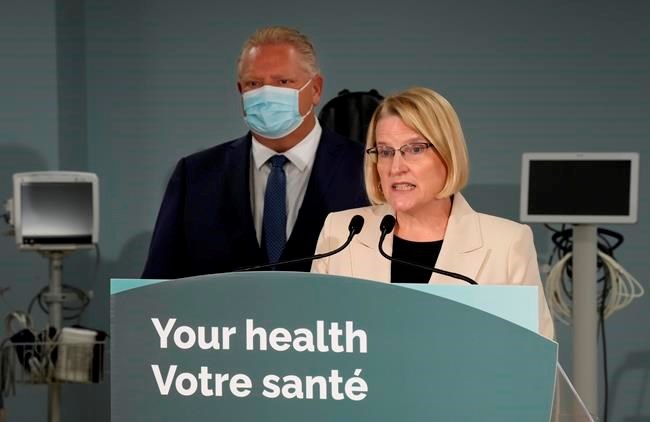TORONTO — Cash-strapped hospices in Ontario say the province needs to boost their annual funding because cost increases that began at the start of the pandemic have not eased.
A group that represents roughly 75 hospices says these end-of-life care providers receive about $53-million a year from the province, which is used to fund up to 60 per cent of clinical services. Donor funding had covered the remaining costs.
But the group says inflation pressures and cost increases, partly linked to rising demand for hospice services, has left the facilities short.
"They haven't decreased the funding, but the costs have gone up that much," said Rick Firth, the president and CEO of Hospice Palliative Care Ontario, which also accredits Ontario's hospices.
"Many have gone through their reserves, attempted to increase their fundraising but in many communities, they're sort of at the maximum what they can do. So hospices are asking the government recognize the value of that work so they are not under pressure to fundraise those dollars."
Hospice Palliative Care Ontario says a $46 million annual increase in funding can help cover costs.
"Hospices have a significant effect on the health-care system," Firth said, highlighting their role in relieving demand for hospital beds.
"At the end of the day, hospitals are not where somebody wants to be when they're dying ... so the benefit that hospices provide to the overall system is both from an efficiency perspective, but also from a quality perspective"
Maison Sudbury Hospice agreed on the need for more funding.
"Anybody should be able to access quality end-of-life services when they need them," said executive director Julie Aubé.
"We have significantly more clients. The fundraising requirement for this hospice was $1-million a year, however, during the pandemic we doubled in size. This year it's $1.6 million. So year after year, it just keeps creeping up."
A hospice co-ordinator with the Near North Palliative Care Network, which provides virtual and in-home services in a region north of Toronto, says the number of clients it has been seeing has "exploded" as well.
Scott Gardiner said Ontario's government needs to understand the importance of hospice service, and not just for dying patients.
"The primary caregiver of that client is usually a son, a daughter, a grandchild and they have their own lives. So our ability to send a volunteer for a couple of hours just allows the caregiver to take a breath, do their own thing that they need to do for their life," Gardiner said.
A press secretary for Ontario's deputy premier and minister of health said in a email that the government announced last year a $1 billion investment over three years to "expand home care services and improve the quality of care."
But Hannah Jensen did not specify how much of that investment is going towards hospices and bereavement providers.
Firth said he appreciates that funding but the group is still working "to get the money out the door," while calling for a boost in annual baseline funding.
This report by The Canadian Press was first published April 21, 2023.
Fakiha Baig, The Canadian Press



